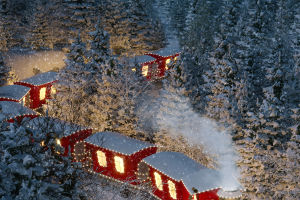The Arctic is one of the most extreme regions on Earth, with extremely high-speed cold winds, permanent snow cover, little food and water, and uninhabitable temperatures. Do you know what Arctic animals there are?
Unlike the Antarctic continent, the Arctic is very active in terms of life. There are 900 species of Epiphyllum, thousands of North American caribou, musk oxen, Arctic rabbits, and up to 1,500 lemmings per hectare in peak years.
One-sixth of all birds in the Northern Hemisphere breed their offspring in the Arctic, and at least 12 species of birds winter in the Arctic. Grizzly bears, Arctic foxes, and Arctic wolves cruise the tundra meadows, while fennel, northern dogfish, grey trout, herring, smelt, long-bodied cod, whitefish, and Arctic salmon frolic in the rivers and lakes.
The vast waters of the Arctic Ocean are also home to a variety of seals, walruses, horned whales, beluga whales and polar bears and Arctic hares.
In addition to these, the main thing is that the Arctic region has been inhabited by local people for at least 10,000 years, such as the Eskimos, Chukchi, Yakuts, Ewenks and Lapps.
Among them, there are only six species of cetaceans in the Arctic waters, and they are far less numerous than in the Southern Ocean, but the horned and beluga whales in the Arctic Ocean are the most precious species of cetaceans in the world.
The horned whale is 6 meters long, with one or two 2.4 to 2.7 meter long straight spiral-shaped horns growing forward from the upper jaw of the male, similar to the spear of a medieval knight in heavy armour.
It is not yet clear what use this horn has in the life of the horned whale, but it is clear that this horn used to have the same price as the same weight of gold in the market.
The fate of the horned whale is self-explanatory and is now considered endangered.
Polar bears. The top carnivore of the Arctic, known for its thick white fur and large size. Able to walk on ice and swim long distances, it uses its heavy paws to break through the ice, hunt seals and other fish, and grab prey from below.
Due to a chronic lack of food, the polar bear's body fat is used to keep it alive until it gets a steady supply of food.
Arctic fox. This tiny Arctic animal lives in some of the harshest areas in the world - the Arctic tundra, an area with very little vegetation - and the fox uses its excellent hunting skills to survive.
It has excellent hearing, and it eats anything it can find, including small rodents, lemurs, eggs of other birds, and fish.
Beluga whale. This Arctic animal is one of the smallest whales, up to 20 feet long and weighing 1.8 tons. This whale looks unique because of the white colour of its skin and its round head.
Hunted for centuries, they are highly social animals that live together in groups and communicate with a variety of different sounds that are unique to each group.
They travel together in the winter in search of food, which consists mainly of worms and small fish.
The Canada lynx is found in Canada and Northern Europe, where its thick fur and long legs make it particularly well-suited to living in the snow. It also has keen hearing and eyesight to help it capture prey, which is rare in the Arctic. Like the Arctic fox, this animal changes the colour of its fur depending on the season, being brown in summer and white in winter.


